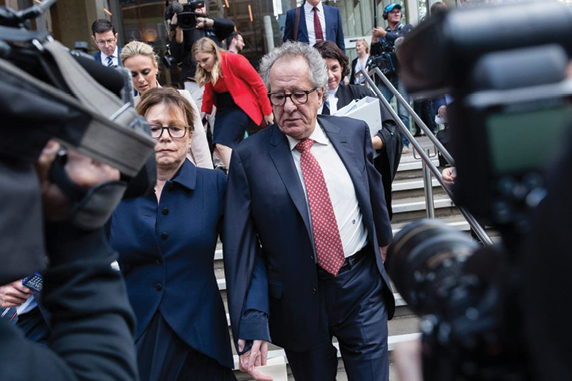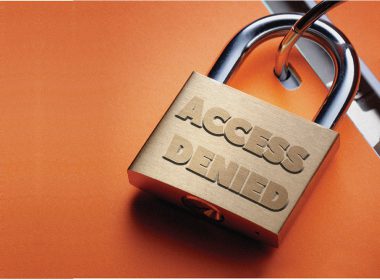Australia’s defamation laws were written in 2005, when today’s newspaper was tomorrow’s fish-and-chip wrapper. They went out of date almost immediately, so where do we go from here?
Defamation law has developed a pretty bad reputation in recent years. Australia’s current legislation was enacted as uniform state and territory Acts before iPhones were invented, before Twitter and Instagram existed, and before the public became obsessed with consuming news and entertainment via digital media.
The publishing industry has evolved rapidly, rendering the corresponding legal framework an anachronism.
“Australian defamation laws are a joke,” says Michael Cameron, General Counsel at News Corp Australia, which sells approximately 17.3 million newspapers every week. It also owns five of Australia’s top 20 news websites, including news.com.au, dailytelegraph.com.au and theaustralian.com.au.
“It’s been 16 years since [governments] last had a crack at defamation law reform, and it just hasn’t kept up with the times. They’re written in the past, there was little or no allowance for the emergence of digital media. When the Act was introduced in Australia, Facebook had no friends and only birds tweeted.
“Subsequently, we’re left with a series of laws that treat a random Facebook post the same way as a front-page story in the paper. Things have to change.”
Defamation capital
According to the University of Technology Sydney’s Trends in Digital Defamation: Defendants, Plaintiffs, Platforms report, NSW is Australia’s defamation capital. More matters reached a substantive decision here (95 cases) than all other jurisdictions combined (94 cases) between 2013-2017.
The number of digital cases has also increased significantly, making up 51.3 per cent of all matters heard during this period. NSW Attorney General Mark Speakman is leading the charge to bring the legislation into the information age.
The Council of Attorneys-General released a set of draft reform provisions for public consultation in November 2019, following a year-long review, and it is widely understood that a second set of provisions focusing more specifically on technology will be released later this year. Speakman has stated he is aiming to have a set of nationally consistent reforms “Parliament ready” by the middle of this year.
“Social media platforms have enabled an explosion in defamation cases, many of them ‘backyard’ actions based on trivial comments,” Speakman wrote in November.
“NSW courts are overrun with minor claims, so much so that Sydney is now regarded as the defamation capital in the world. I want NSW to lead Australia’s legal system by many measures. This isn’t one of them. We’ve consulted, we’ve crafted, and we’ve captured a fine balance.”

Fundamental values
At the core of defamation legislation is a careful balance between freedom of speech and protection of reputation.
To make a claim, a plaintiff needs to prove three things. First, that defamatory material was published. Second, that they were clearly identified. And third, that it caused harm to their reputation. There are a number of defences available. For example, if the material is true or of public concern, expressed an honest opinion and not a statement of fact, or was made in a privileged context.
“I think there are a number of really positive things being contemplated here,” says Professor David Rolph of the University of Sydney, one of Australia’s leading defamation experts and someone who believes the reform process could benefit from a longer and more comprehensive public consultation.
“A concern I still have is that other jurisdictions overseas have taken a long, considered approach to defamation law reform and have taken a look at basic principles – what do we mean by reputation? What do we mean by freedom of speech? To reform and modernise a tort that is 100 years old needs time and careful thinking. We need to look at it from the ground up,” he says.
“Unless you have some sort of thinking about those sorts of things, reform processes can easily become tinkering instead of meaningful reform … things like contextual truth, for example. Had there been a more considered process 15 years ago, then we wouldn’t be trying to redraft it now.”
Modernising the law
The proposed reforms include a number of measures designed to better reflect modern publishing.
Among the key changes is the introduction of a new “serious harm” threshold, which a plaintiff must meet before a matter can be litigated, to reduce the number of trivial actions.
Meanwhile, a new “single publication rule” means the limitation period won’t reset every time a new user downloads an article, or an associate of the original publisher shares the material, to better suit the way people use the internet.
There are also some technical changes that will impact the way matters run, including a revised defence of contextual truth, which is designed to make it clear that a defendant can plead back the imputations the plaintiff is relying on to clarify their meaning and establish whether they are substantially true.
Then there is the issue of damages. The model provisions propose a statutory cap on damages for non-economic loss and clarify that an award of aggravated damages should be made separately. This is designed to align damages awarded in defamation cases more closely with remedies for other torts.
Media freedom
The model defamation provisions are undoubtedly a win for the media industry, which has been a powerful advocate for reform. Defamation is one of the core objectives of Australia’s Right to Know coalition, an alliance of 18 of Australia’s biggest media companies created to protect media freedom.
Marlia Saunders, Senior Litigation Counsel at News Corp Australia, says the proposed reforms are a step in the right direction when it comes to investigative journalism and holding public figures to account.
“I think the way defamation laws have been heading really does stifle freedom of speech. It’s having a chilling effect on the media being able to report on stories of great public importance and public interest. A great example is the #MeToo movement – you can see the difference between it taking off in the US and never really getting off the ground in Australia,” she says.
“The media here has to be a lot more cautious in reporting stories. Australia is the defamation capital of the world and it’s out of step with other Western democracies. It really does need reform to bring it into line with the UK, New Zealand and Canada.”
Last year, actor Geoffrey Rush received a record-breaking $850,000 in damages, as well as almost $2 million for lost earnings, when he successfully sued Nationwide News (a subsidiary of News Corp Australia) over a series of defamatory articles accusing him of behaving inappropriately toward a female colleague during a production of King Lear in Sydney. The matter is currently being appealed.
David v Goliath
Some private practitioners are concerned the reforms are too heavily weighted towards large publishers and that they may not do enough to protect reputations of individuals.
“One of the main things we need to keep in mind is the most serious cases of defamation are the ones that come because of the journalistic errors or recklessness of the big media companies, and they then have these enormous resources behind them,” says Stewart O’Connell from O’Brien Solicitors.
O’Connell is currently representing Dylan Voller, who made national headlines in 2017 when a video was released of him being mistreated at Don Dale Youth Detention Centre near Darwin. In June 2019, he successfully sued a number of media outlets over a series of defamatory comments made by members of the public on posts published on their Facebook pages. This decision is also under appeal.
“The average person can’t afford to run a defamation action unless they can find lawyers willing to do it on a pro bono or a no-win, no-fee basis,” he says.
“Media companies are always crying out for changes in the law to protect freedom of speech, but it can’t be forgotten that they have an envious position as far as ability to defend against litigation is concerned. We need to keep protections in place to protect ordinary people.”

Viability of action
There is also a huge discrepancy between remedies awarded in large-scale and small-scale matters, and this is an area that may require further attention as the reform process continues.
The Rush decision came after the Victorian Court of Appeal reduced a previously record-breaking award made to another actor, Rebel Wilson, in 2018. A jury agreed with Wilson that Bauer Media, the publisher of Woman’s Day, defamed her by branding her a serial liar. She was awarded $4.5 million at trial, but walked away with just $600,000 after Bauer Media successfully appealed the amount.
Richard Leder, a partner at Corrs Chambers Westgarth, represented Wilson in the matter.
“The main observation I would make is that it’s a rare plaintiff who can actually proceed to trial. It’s also probably a rare defendant who would think it’s logical to proceed to trial, because most of the time – not always, but most often – the cost and the stress of litigation will outweigh the remedy,” he says.
“For someone like Rebel Wilson, it was only really the loss-of-income claim that made it financially viable. Other than that, even receiving damages that are double the cap, the trial ran for more than a month and the shortfall between costs awarded and actual costs can be significant.”
Leder’s view is that while damages for defamation shouldn’t be greater than awards for other types of personal injury, the statutory cap should only apply to general damages.
“If you lose an eye and the court decides it’s worth a few hundred thousand dollars, that’s one thing,” he says. “But if you also can’t work because of it, that’s an important factor.”
Small-scale matters
At the other end of the spectrum, in January the Supreme Court of South Australia awarded just $3,500 in damages for defamation in the case of Brown v Kilpatrick. The matter concerned an abusive email exchange between the leaders of two rival shooting clubs, into which other people were copied.
Peter O’Brien, Principal at O’Brien Solicitors, argues that remedies must be made available at every level.
“Unless you can show evidence of serious harm, liability is close to zero because damages are close to zero,” he tells LSJ.
“That means wealthy people with highly published reputations might be able to get over that threshold quite easily, whereas your ordinary law-abiding citizen who goes about their life in an ordinary matter and has their reputation diminished by an irresponsible piece of journalism might not be able to establish the degree of harm necessary to pass the threshold.
“How do you prove damage to your reputation? In some cases, it will be obvious. In other cases, it can be quite insidious.”
To this end, he says alternative dispute resolution methods – such as mediation – can be very beneficial, as well as non-monetary remedies such as take-down orders, written apologies and published corrections.
More to come
While it’s widely agreed that change is necessary, defamation is a very complex area of legal practice and the details of the proposed reforms remain controversial. There are several important questions remaining, which stakeholders hope will be addressed in the next round of proposals.
One is the matter of intermediary liability, particularly following the Dylan Voller case. This is required to clarify the responsibilities of technology companies such as Facebook, Twitter and Google when it comes to hosting and disseminating defamatory content published by users on pages operated by third parties.
Another is the role of the Federal Court. An increasing number of defamation matters have been heard in the Federal Court in recent years, even though defamation falls under state and territory Acts, due to the tactical advantage that can be gained by avoiding Supreme Court juries.
Last year, Federal Attorney General Christian Porter alluded to supporting measures to prevent “forum shopping”. However, the current reforms have made no mention of involvement from the Commonwealth. For now, the full extent of defamation’s digital makeover remains to be seen.
Key proposed changes include
- Plaintiffs must meet a new “serious harm” threshold.
- A “single publication rule” will affect limitation periods.
- The contextual truth defence has been revised.
- Damages for non-economic loss will be capped.




